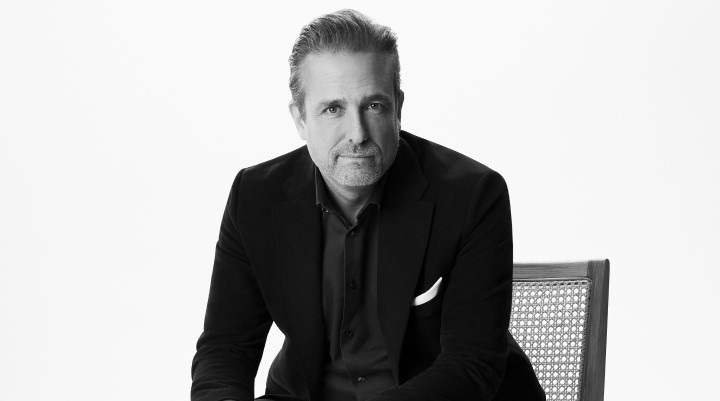When Freedom CEO Blaine Callard joined the business several years ago, he had a major task on his hands to transform the furniture chain from being “the old brand your mum shopped at” into a stylish new retail destination. “Back in the ‘90s, Freedom was the go-to furniture store for design, but over time, my view is that it had become vanilla and tired as the customer base aged,” he told Inside Retail. Callard has actually turned around several businesses during his career. Prior to le
to leading Freedom, he was at Harvey Norman Ireland, which he transformed within a period of five years, guiding it out of deep losses following the Irish economic collapse in 2010.
Since rebranding Freedom in 2020, Callard has continued the retailer’s transformation journey and during Retail Week, he shared his insights from the process with Inside Retail Professionals.
Here are some of the key takeaways:
Want to know what’s going on in the business? Talk to the people inside
According to Callard, during the diagnosis stage, when he was still trying to ascertain where the problems lay within Freedom, he invested time in interviewing more than 100 people within the business within his first 90 days. There were back-to-back interviews and store and warehouse visits. It’s an approach that Callard credits to an academic called Gary Hamel from the Harvard Business School.
“All the intellectual horsepower of the business actually sits inside an organisation, it doesn’t sit at the top. So if you want to know what’s going on within an organisation, you’ve got to go and ask them. If you want to know how to fix a company, just go and ask everybody,” explained Callard.
“Often down in the core of the business, there are all these really smart people who see all the problems, understand the solutions but nobody’s asked them, and it hasn’t been stitched together.”
Why product is the ultimate source of value…and the problem with having an accountant at the top of a business
Many retail turnarounds include shiny new physical stores and a website transformation, but often that doesn’t mean anything if the product itself hasn’t been overhauled. Callard likened the experience to going to tourist traps with beautiful views but bad customer service and mediocre food.
“There’s a pie shop near where I live on the northern beaches in Sydney and there are people every day queued up. It’s a grungy little shop with poor service and it’s not a good experience, but the pies are fantastic and people will queue up. There’s nothing special about the restaurant except the food. Great product – the stuff that people will cross the desert for – is the ultimate source of value,” he said.
“Often if we look at retailers that are in trouble, you might find at the top is someone who’s not a merchant. If you’re a retailer or merchant, you get the importance of product. If you come from a finance or investment or analyst background, it’s really really easy to get distracted by showing baubles: ‘If we just fix the website, everything will be fine.’ But if you have stuff that no-one wants, you’re wasting your time.”
What he wishes he could have done differently
If Callard were tasked with turning around another business, he would aim to get the right team on board much faster than he did at Freedom.
“This is a turnaround, you need the right team. If you don’t have the right people, you’ve got to do something about it. If you take a year or 18 months to make a decision around key talent in the team, that’s highly problematic,” said Callard.
“We replaced two-thirds of our store management team within the first 14 months and we have some fantastic managers now, but we had a lot that weren’t right. We didn’t move as quickly as I would have liked. You’ve got to get the right people fast.”
But perhaps the biggest decision that Callard regrets about the Freedom turnaround was not moving faster with the re-platforming of the website.
“We dragged our feet on re-platforming, we should have ticked that off straight away. We made excuses for it. We went live with a new order management system that crippled our business for about 12 months and put a huge handbrake on the turnaround,” Callard revealed.
“We were doing a turnaround as well as this huge tech change we had in 2020 that almost derailed Freedom completely. We should have rolled back on it 24 hours after it went live. I will regret that for the rest of my career.”
What a good turnaround culture look like: The soil needs to be fertile for change
When Callard first entered Freedom, he was “stunned” that most people didn’t know that it was loss-making. It was a similar situation in Harvey Norman Slovenia, where he also turned around the business.
“Nobody there except senior management knew it was loss-making, it was considered a secret. How are you going to tell a company we need to change everything we’re doing because we’re losing money?” said Callard.
“In a turnaround, you’re dealing with massive change. So culture is everything. Anyone who has done basic change management training understands that you’ve got to have the culture right. The soil needs to be fertile for change, or it’s going to just wither and die. You need people who are going to listen, be open and have trust.”
“A great culture in a turnaround is about building really great trust in what is probably a very low-trust environment. Because trust lubricates change.”
The Inside Retail Masterclasses were brought to you by Adobe.

